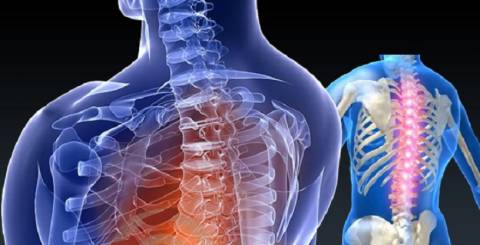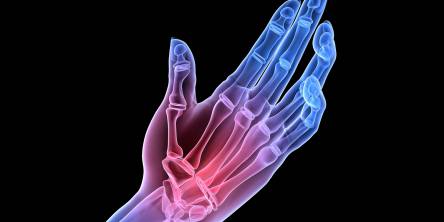Spine Surgery: Types, Recovery, Risks and Benefits

Overview
The spine and spinal cord together form one of the most vital neurological structures. A spine can go through a fracture, suffer an infection, can bend unusually or can suffer from a tumor or undergo bone changes that come with aging. A damaged spine can badly interfere with the harmonious functioning of our body, causing a lot of unwelcome problems like severe pain, numbness and weakness in the arms and legs, difficulty in breathing, digestion issues, and impairment of the bladder and bowel control.
Most of us have experienced at least one episode of back pain; spinal pain to be more specific. Generally, the spine problems are cured using the conventional treatment techniques such as pain relief medicines, physiotherapy, Epidural injections, etc. But for patients, who do not gain any relief from these, are suggested spine surgeries.
Types
There are quite a few spine treatment techniques available today; the most common spine surgery procedures are:
• Artificial Spine Lumbar Disc Replacement
• Minimally Invasive Spine Surgery
• Spine Osteotomy
• Spinal Instrumentation
• Cervical Spine Surgery
• Spinal Fusion
• Spine Decompression Surgery
• Foraminotomy
• Lumbar Laminectomy for Spine or Spine Decompression
• Spine Tumor Surgery
Whether it is an Open surgery or a Minimally Invasive Spine procedure, there are three surgical approaches to perform such surgeries:
• Anterior approach
• Posterior approach
• Lateral approach
Recovery
In order to bring out the best surgical results, following the surgeon’s instructions plays a very significant role. Each kind of spine surgery has its own duration of recovery, depending on the patient’s age, health condition, the severity of the spinal ailment that was cured, whether the procedure was invasive or non-invasive in nature and definitely the competency of the surgical hands. For example, the recovery period for the Spinal Fusion procedure is of about 3-4 months for the fusion to heal completely.
The patients need to avoid giving any sudden jerk to the spine, bending, lifting heavy things, indulging in any kind of sports activity. Even the best Spine and Orthopaedic surgeons strongly recommend that keeping in mind the vitality of organ, ample amount of rest should be taken.
Risks
With the Spine and Neurosurgical treatment technology improving in leaps and bounds with each passing year, so does the chances of risks and complications is going down. But despite of being rare, there can be some risk factors that come along with spinal procedures and these risks differ for every spine surgery:
• Complications associated with anesthesia
• Infection at the surgical site
• Failure to provide any relief from the pain
• In case of Spinal Fusion, the vertebrae might not fuse together properly
• Nerve damage
• In cases, where screws or other implants have been used, they might break or loosen due to which the patient may need a revision procedure
• Blood clots in the legs or lungs
• Heart attack or stroke
• Disc Herniation
• In extremely rare cases, paralysis
Thankfully, these complications are extremely rare and even if they occur, there are treatment methods with which the best Spine and Orthopaedic surgeons can address them.
Benefits
Considering the difficult kinds of symptoms that spinal ailments bring along, the benefits are surely worth going through the surgeries. Every spine surgery has its own share of benefits and can vary from patient to patient. But overall, the advantages of spine procedures are:
• Long –lasting respite from the severe pain
• Patient’s range of motion is improved
• The patient does not have to restrict himself or herself from doing the activities of his or her choice
• The improvement in the quality of life gives a positive thrust to the patient’s confidence
• Many surgeries being minimally invasive, the recovery is faster and the pain and bleeding involved in much lower
• Very tiny incision so hardly any chances of infection
Conclusion
Much credit goes to the worldwide Spine specialists and medical researchers, who are assertively pushing themselves to find out newer methods so that the number of patients suffering from spinal disorders can be curbed. Thanks to the advent of highly progressive surgical options, the patients can get cured of the most severe type of spinal disorders. Thus, it is suggested that patients should never ignore if they face any kind of pain or discomfort around the spinal region. The delay and ignorance can not only make them suffer in the long run but can lead to the occurrence of more catastrophic outcomes.
Similar Articles
Veins on the skin that produce swelling may indicate varicose veins. Varicose veins are a vein disorder, and their role is to return blood from the leg to the heart. The specific cause of varicose veins, a prevalent condition, is unknown.
A healthy spine is the foundation of a functioning body. It supports your frame while allowing you to bend, flex, and move more freely. However, most people neglect the importance of spine health until they have a back condition.
Whether you're having trouble moving body parts or experiencing worsening joint discomfort, an orthopedic doctor can help. They can treat anything from a minor strain to complex treatments such as shoulder replacement. The appropriate treatment from an orthopedic expert at the right time might relieve your pain and improve your symptoms in less time.
When it comes to trauma, professionals in the mental health sector readily admit that no single style of therapy or intervention is appropriate for every case or individual.
Rheumatoid arthritis (RA) is a type of autoimmune disease that occurs when the body's immune system attacks the lining of joints, causing inflammation and causing symptoms like pain and stiffness. RA usually affects both sides of the body in a similar way, but small joints of the hands and feet are often affected first, often knuckle joints of the fingers.
An electroencephalogram (EEG) is a test that measures the electrical activity in the brain. Healthcare experts utilize it to evaluate and comprehend neurological illnesses, sleep disorders, and brain damage.
So, your back decided to stage a mutiny and gift you with a herniated disc. Lovely. Now what? If you’re imagining a future filled with endless discomfort and groaning every time you get out of bed, don’t fret. There are plenty of ways to tackle a herniated disc and get back to living your best, pain-free life.
Back pain – it’s not just a matter of “I lifted a heavy box, and now my back hurts.” It’s often the result of a complex dance between our minds and bodies, with stress, anxiety, and emotions playing lead roles. If you’ve ever woken up with a stiff back after a tough week or felt your spine twinge just from reading a long email chain, you’re not alone.
Chronic pain is a medical problem that affects many people around the world. Unlike acute pain, which is a short-term response of the body to tissue damage, chronic pain lasts longer, often without obvious physical damage. It can last from several months to several years, and its consequences can affect all aspects of a person's life









